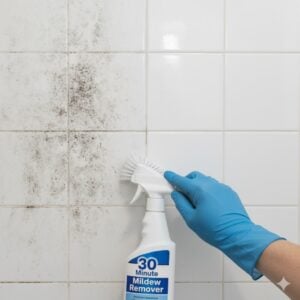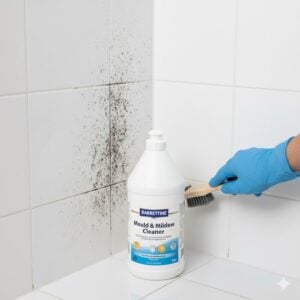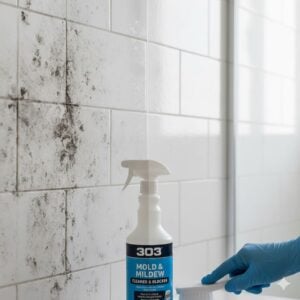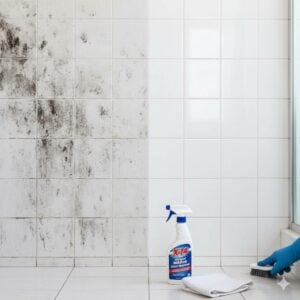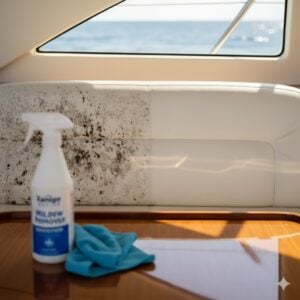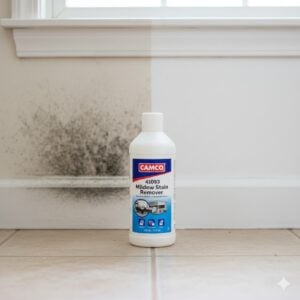Finding a reliable mold killing solution is a must when you’re living in a place like the UAE, where humidity, air conditioning, and sealed windows can trap moisture and create the perfect environment for mold to grow. Whether it’s creeping along your bathroom ceiling, behind furniture, or inside your walls, mold is more than just an eyesore—it’s a potential health hazard and a sign of deeper moisture issues in your home.
In this guide, we help you understand what really works to kill mold and how to use each method safely and effectively. Not every product on the shelf will solve your problem—and some can even make it worse. Let’s break down the most effective mold killing solutions, how to use them, and when you should call in professional help.
Table of Contents
Toggle1. Understanding the Root of Mold Growth
Mold is a type of fungus that grows in moist, warm, and poorly ventilated areas. It feeds on organic materials like wood, fabric, and even dust. Killing surface mold is one thing—but unless you address the root cause of moisture, it will keep coming back. Common causes of mold in UAE homes include:
- Condensation around AC units and vents
- Water leaks from plumbing or roofs
- Poor ventilation in bathrooms and kitchens
- High humidity trapped inside closed windows
Before you choose a mold killing solution, make sure you’ve identified the source of moisture. Otherwise, you’re only treating symptoms, not solving the problem.
2. DIY Mold Killing Solutions That Actually Work
For small areas and early-stage mold, there are several solutions you can try at home. These are not miracle products—but they’re effective when used correctly.
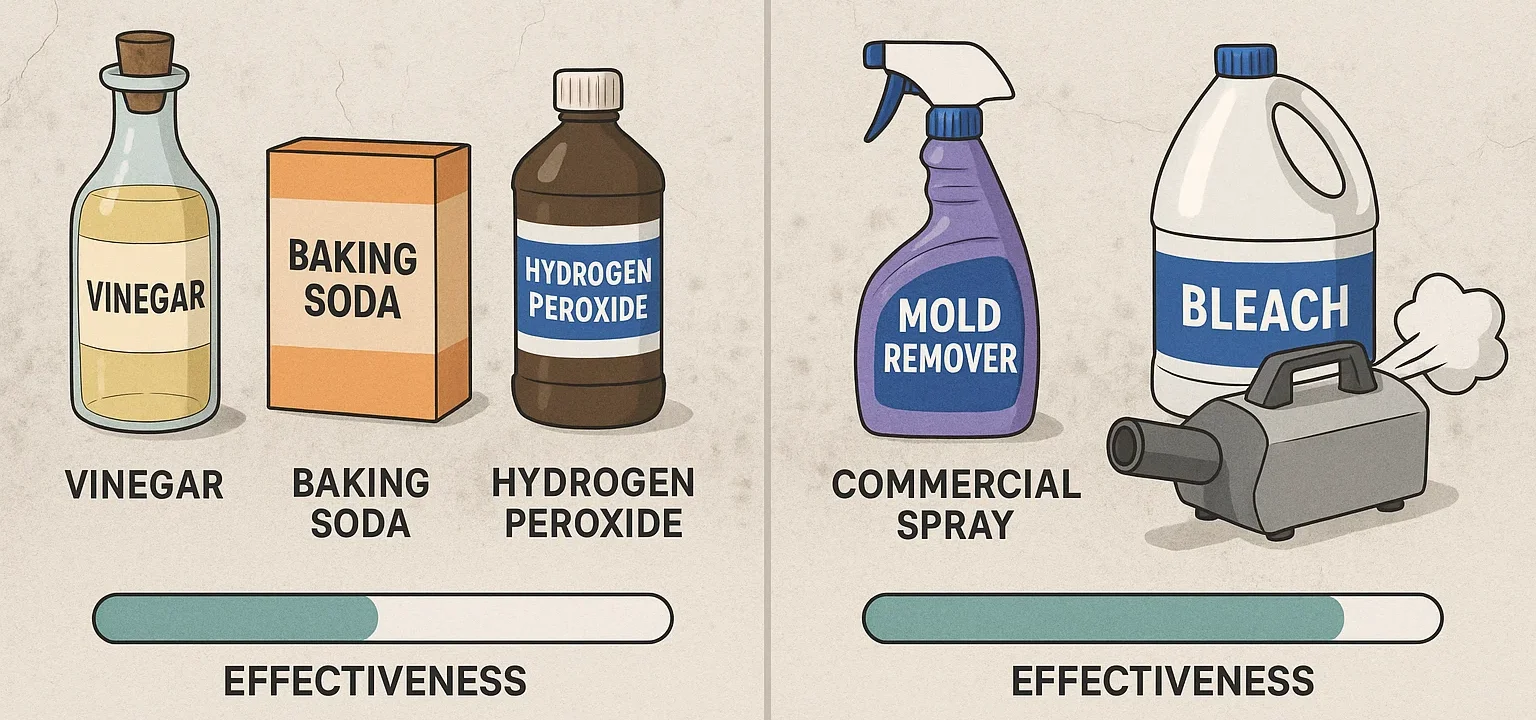
White Vinegar: A natural and accessible remedy. Spray undiluted vinegar onto moldy surfaces and leave it for at least one hour before scrubbing and rinsing. Vinegar kills 82% of mold species and doesn’t emit toxic fumes.
Hydrogen Peroxide (3% solution): Spray directly onto mold and leave for 10–15 minutes. Scrub with a brush, then wipe clean. It’s effective on porous materials like fabric, wood, and tiles.
Baking Soda + Water: A gentle method, especially useful if you’re sensitive to strong odors. Mix 1 tablespoon of baking soda with 1 cup of water. Spray and scrub. This also helps deodorize affected areas.
Tea Tree Oil Solution: Natural but expensive. Mix 1 teaspoon of tea tree oil with 1 cup of water. Spray and leave—it doesn’t need to be rinsed. Great for small spots, furniture, and leather surfaces.
Important: Always wear gloves and a mask when applying mold killers, and ventilate the room well. If symptoms worsen, stop immediately.
3. Commercial Mold Killers: What to Use and Avoid
If the infestation is bigger, or you’ve tried DIY methods with no success, it’s time to consider stronger products. But not all mold removers are created equal.
Bleach: Common but controversial. While bleach can disinfect and lighten visible mold stains on non-porous surfaces (like glass or tiles), it does not penetrate deeply into porous materials like drywall or wood. This means the mold can regrow underneath. Also, bleach releases harsh fumes, especially dangerous in enclosed spaces.
Commercial Mold Sprays: Products like Concrobium Mold Control, RMR-86, and Mold Armor Mold Remover are available in UAE through specialized suppliers. These solutions are formulated to kill mold on contact and create a protective barrier to prevent regrowth.
Enzyme Cleaners: These use natural enzymes to break down mold at the root, including biofilms. They’re often safer for children and pets, but typically work slower and cost more than chemical products.
Fogging Agents: Sometimes used by professionals, these atomized disinfectants fill a room to treat airborne spores and hard-to-reach areas. However, fogging is only effective after the root mold is physically removed—it’s not a standalone solution.
4. When Mold Killing Isn’t Enough
There comes a point when killing mold is no longer enough. If you notice the following signs, it means the mold has likely penetrated deeper and professional remediation is necessary:
- Mold smell remains even after cleaning
- Stains reappear within days
- The infected area exceeds 1 square meter
- Health symptoms such as coughing, sneezing, headaches, or fatigue continue indoors
In these cases, you shouldn’t risk temporary fixes. A proper remediation process will involve:
- Inspection and moisture level assessment
- Physical removal of moldy materials if needed
- Use of industrial-strength biocide (not available to the public)
- Humidity and ventilation correction
- Post-treatment sealing or repainting with mold-resistant products
At Bio-On UAE, we offer free mold inspections for areas larger than 10 sq.m. and detailed pricing based on the exact volume of work. Click the contact button on the right-middle of this post to get started with no obligation.
5. Preventing Mold After Killing It
The final step in any mold control plan is prevention. After killing the visible mold, make sure you prevent it from coming back by addressing the environment that allowed it to grow in the first place.
Here’s what we recommend:
- Use a dehumidifier: Especially during summer months or in naturally damp rooms like laundry areas.
- Ventilate regularly: Open windows when possible. Use exhaust fans in kitchens and bathrooms.
- Fix water leaks: Even a small leak can lead to big mold problems if ignored.
- Choose mold-resistant finishes: Such as waterproof paints, sealed tiles, and treated woods.
- Clean often: Especially areas prone to moisture, like under sinks, behind toilets, or under AC units.
If you’ve recently treated your space and want to add an extra layer of protection, we can apply mold-resistant sealants and recommend paint options that contain anti-fungal agents.
Conclusion
There’s no one-size-fits-all mold killing solution. What works for your bathroom ceiling might not work behind your bedroom drywall. DIY products like vinegar or hydrogen peroxide are good starting points, but they have limitations. Commercial mold killers offer stronger results, but can pose health risks if misused.
When the problem grows bigger than a patch of wall, it’s time to call in experts who can inspect, treat, and prevent recurrence using professional-grade tools and knowledge of how mold behaves in UAE’s climate. We at Bio-On have helped hundreds of clients across Dubai, Abu Dhabi, and beyond make their homes safe and mold-free again.
If you need help finding the right solution for your home, click the contact button on the right-middle of this post. Our team is ready to help you breathe easier, live safer, and take control of mold—once and for all.








